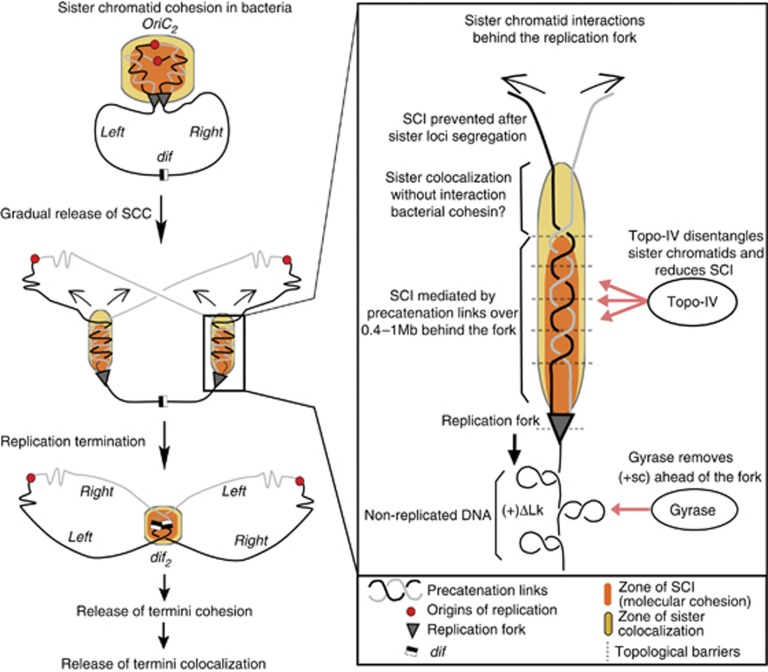Figure 6.
Model for establishment and release of sister chromatid cohesion in E. coli. In E. coli (middle panel) SSC is gradually released behind the replication fork in such a way that segregation of sister loci begins before replication terminates. On the present model, SCC is mediated by pre-catenation links that promote sister chromatids interactions (SCI, orange areas) and colocalisation (yellow zone). Interestingly, colocalisation does not necessarily confer the ability to interact physically. For Topo-IV, the main decatenase in E. coli, is proposed to release SSC by removing pre-catenation links created by replication. Concomitantly, DNA gyrase acts before the replication fork to relax positive supercoils (+sc). SCC is then established immediately after replication, and released after a time frame required for resolution of topological links. Topological barriers or chromosome segregation are able to limit the diffusion of precatenation The persistence of SCI for a 10–30 min period after replication suggests that a region about 400 kb to 1MB is involved in cohesive precatenation.

